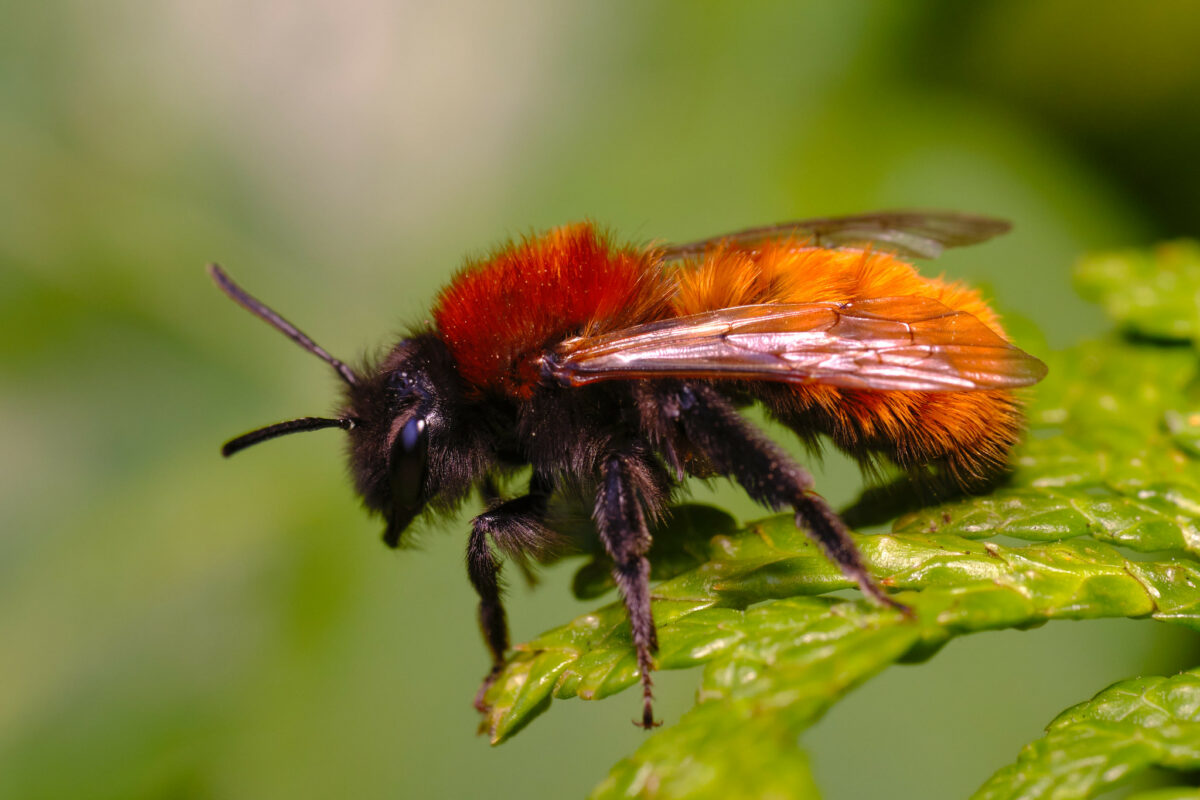There are around 270 bee species in the UK, and over 90% of these are solitary – they do not nest in colonies, do not produce honey and don’t have a queen. Instead, these bees lead solitary lives, only coming together to mate. The group can be divided into ground-nesting species, found on lawns, paths and loose soil, or aerial nesters which utilise hollow plant stems, dead wood and man-made bee hotels to build a nest for larval bees.
Here we look at a small selection of these important pollinators found in the UK, outlining ways in which they can be identified and where they can be found.
Mason Bees
Mason bees is the name used to refer to bees of the genus Osmia. There are around 500 different species of mason bee across the world, and around 20 of these can be found in the UK. This group gets their name from their use of mud or clay in nest building, which takes place in naturally occurring gaps or cracks, and other small, dark cavities. Some species of mason bee will also use hollow stems or bore holes made by wood-boring insects.
Red Mason Bee (Osmia bicornis)
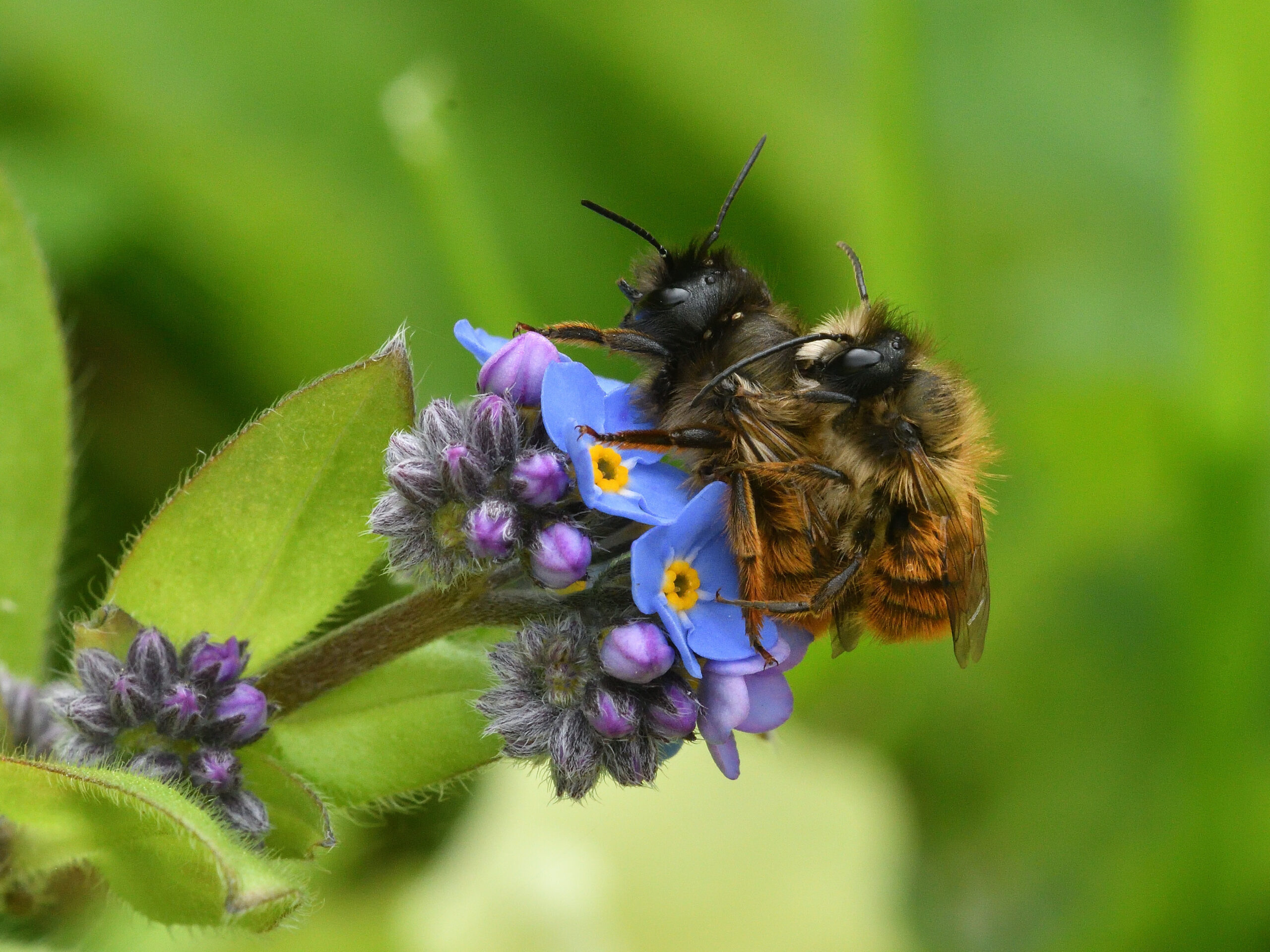
Distribution: Widespread and common throughout England and Wales. Rarer in Scotland. These bees can be found from early spring in grassland, farmland, towns and gardens. Red Mason Bees are common in built environments and are often seen nesting in the crumbling mortar of old walls. This species is also a common inhabitant of bee hotels.
Identification: These fluffy bees grow up to 1.1cm long and are typically identified by dense, gingery hair. On both males and females, the head and thorax are brown with an orange abdomen. Males are typically smaller than their female counterparts and have a distinctive white tuft of hair on the head. Female Red Mason Bees have dense orange hairs on the abdomen, with pollen collecting hairs on the underside. This species also has a pair of short, distinct horns on the head.
Red-tailed Mason Bee (Osmia bicolor)
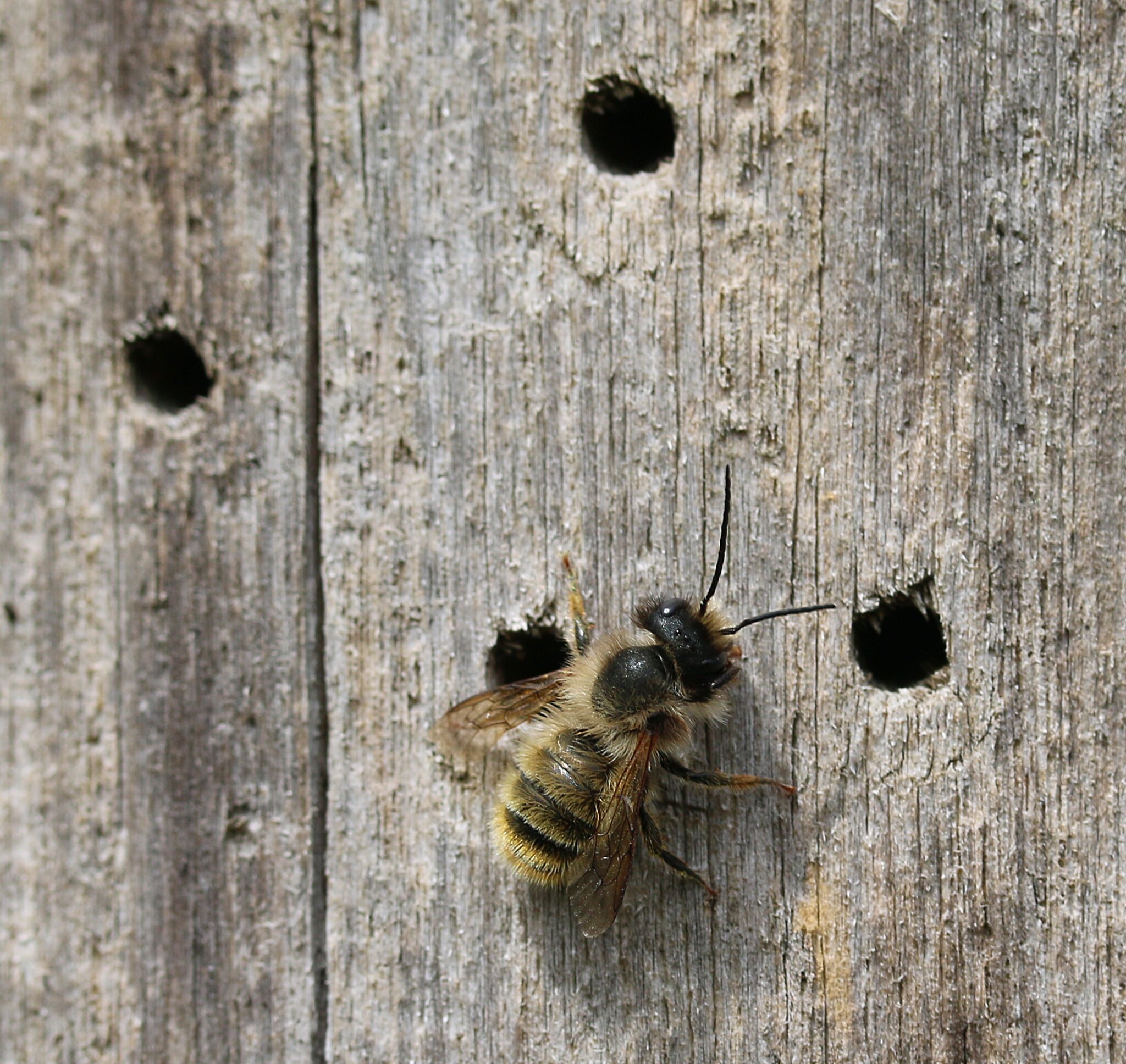
Distribution: Nationally rare in the UK. Red-tailed Mason Bees can be found from March to July in the south and east of England and south Wales. This species occurs exclusively on calcareous grassland over chalk or limestone, in quarries, grassland and brownfield sites.
Identification: This species has dense, black hair on the head and thorax. Bright orange-red hair is present on the abdomen and the lower legs, forming stripes of orange and brown on the upper abdomen. Males are slimmer and less vibrant than females, and can have pale, duller brown hairs on their head, thorax and abdomen.
Mining Bees
Sometimes referred to as digger bees, this group are named after their burrowing behaviours in which they create their nests. There are roughly 65 species in the Andrena genus, making mining bees the largest bee genus in Britain.
Tawny Mining Bee (Andrena fulva)
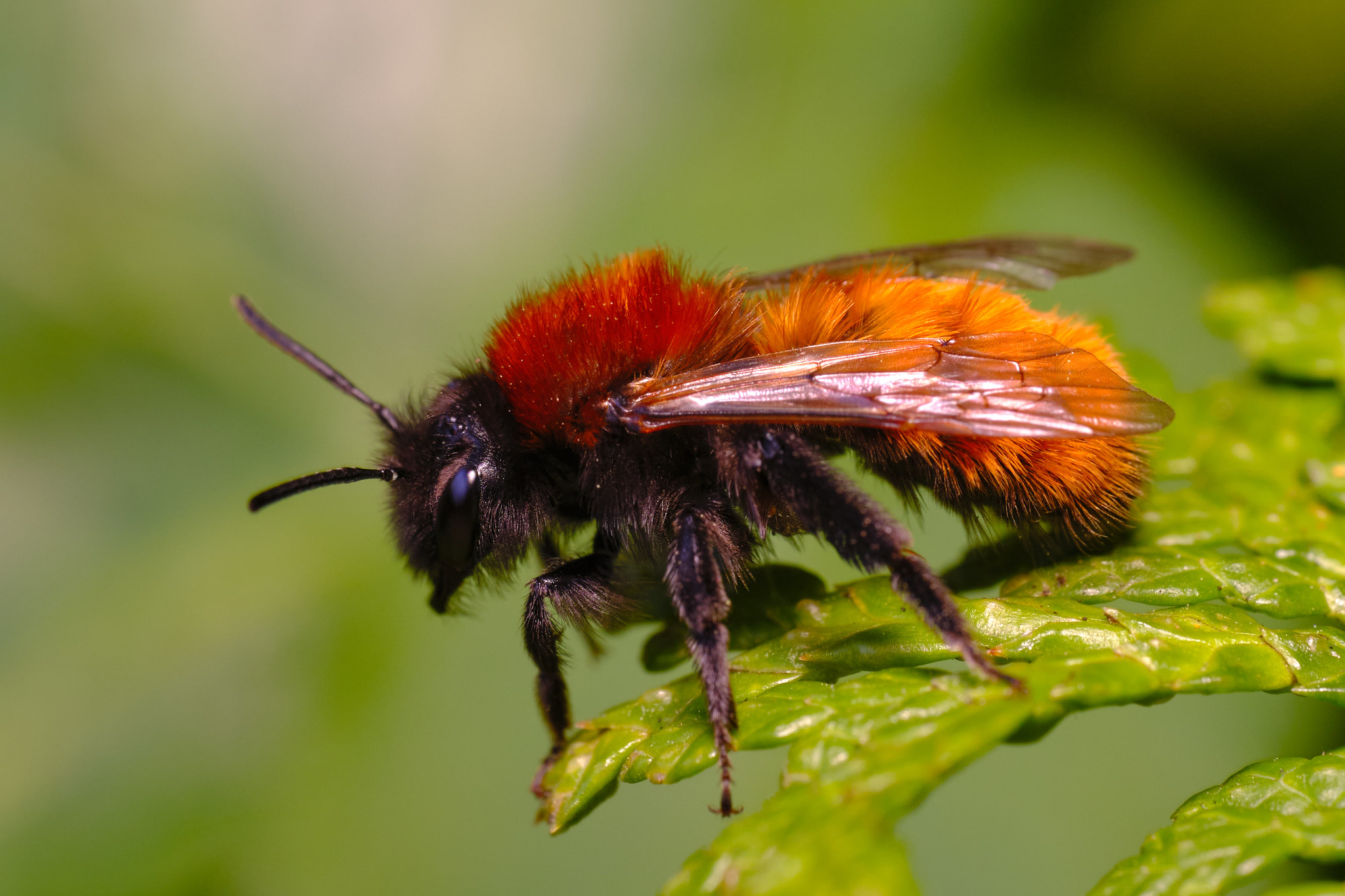
Distribution: Widespread and common in England and Wales. Populations are growing in Scotland. This species can be found in farmland, heathland, parks, towns and gardens from March to June.
Identification: Similar in size to a honeybee, with dense orange hair and a black face. Females tend to be larger and have a thick, orange coat covering the upper thorax and abdomen. The underside is covered with black hair, along with the head and legs. Males are trickier to identify but are generally smaller and slimmer. They have long mandibles and are browner in colour, but can be distinguished by white tufts of facial hair on the head.
Ashy Mining Bee (Andrena cineraria)

Distribution: Common and widespread across Britain and Ireland. Can be found nesting in gardens, woodlands, riverbanks and urban environments from March to July.
Identification: A distinctive bee growing up to 15mm in length. Females have two, broad grey bands at the top and bottom of the thorax. The abdomen is sparsely haired, revealing a glossy black exoskeleton and the legs are covered with dense black hair. They also have a patch of ashy grey hair on their faces. Males have similar markings but are generally smaller in size. The bands are less distinct, and they have a spread of grey hair across their thorax.
Leafcutter Bees
Named for their nesting habits, these bees are known to cut circular leaf pieces to use as building material for their nests. Leafcutter bees lay their eggs in natural tree cavities where they use up to 40 pieces of harvested leaves and petals to create a chamber for safe incubation. There are seven different species of leafcutter bee in the UK – they can be found nesting in beetle holes, plant stems, deadwood, cliffs or old walls.
Patchwork Leafcutter Bee (Megachile centuncularis)
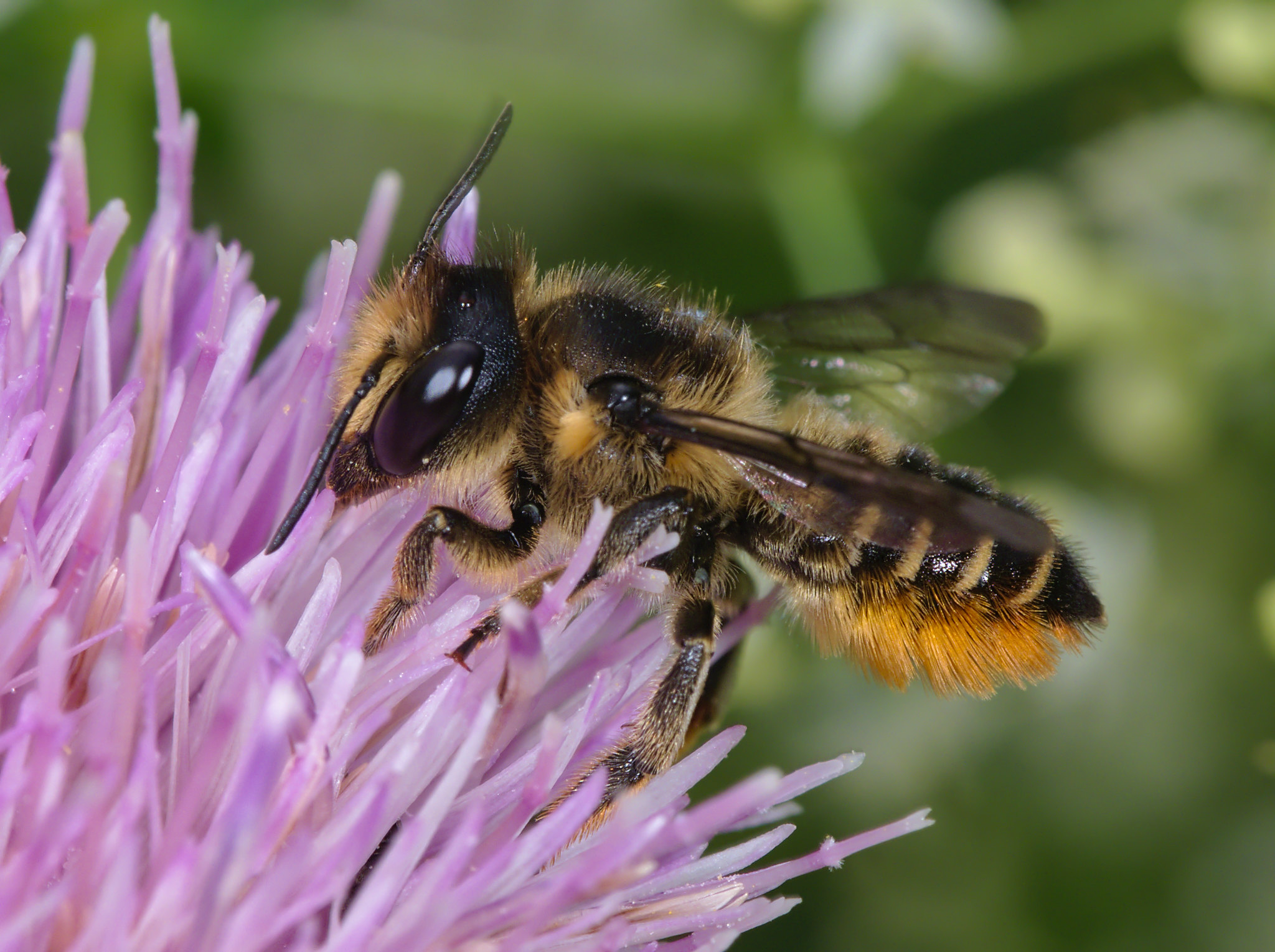
Distribution: Widespread and common throughout the UK, although less common in the north. Patchwork Leafcutter Bees can be found in a range of habitats from April to August, including grassland, farmland, woodland, towns and gardens. This species is strongly associated with willowherbs, honeysuckle and roses.
Identification: Easily identified by the vibrant yellow-orange pollen brush under the abdomen, extending right to the tip. This species is a similar size to honeybees, growing up to 13mm. The female has defined white bands across the abdomen. Males are more challenging to identify – similar in appearance to a dark honeybee, with the characteristic vibrant underside and tan coloured hair around their thorax.
Willughby’s Leafcutter Bee (Megachile willughbiella)
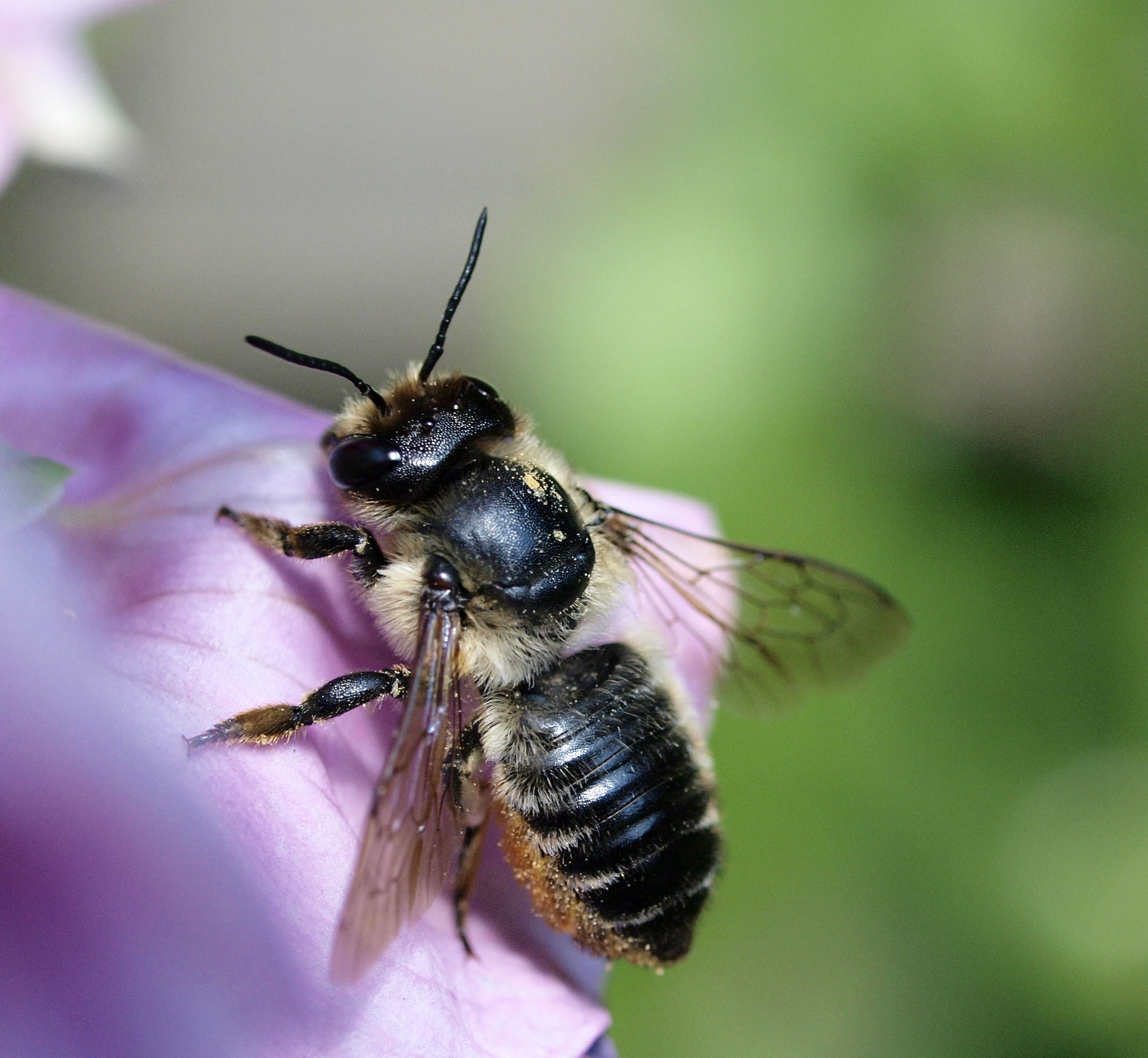
Distribution: Common and widespread across Britain. Frequently observed in brownfield sites from June to August. This species is also readily found in bee hotels.
Identification: Up to 18mm in size, Willughby’s Leafcutter Bees are similar in appearance to Patchwork Leafcutter Bees. They appear similar to dark honeybees, with little hair. The species varies in shades of black, with orange and gold throughout the coat and an orange pollen brush. Males can be distinguished by oversized front basitarsi, giving the appearance of white, wooly mittens.

